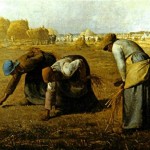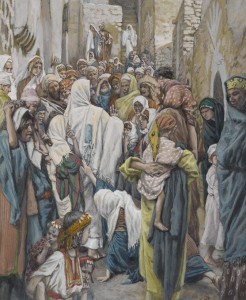Thank you for your feedback. I have finalized the report and sent it to my stake president. I am pleased to report that he has agreed to send it on to General Authorities. The original text of the post is below for historical purposes, but the final version, incorporating feedback I received from Exponent readers and others, is available at http://bit.ly/LDSpolicy2.

Transparency is key to preventing abuses in any system of governance. Organizational secrecy was a common indicator of corruption in scripture. (3 Nephi 7, Ether 14)
Improve transparency in church policy by allowing all church members to read Church Handbook of Instructions 1 and posting it online alongside Handbook 2. All but nine female church members are barred from reading Handbook 1, which includes many policies that affect women such as the rights of the accused under church discipline. While many men have opportunities to read Handbook 1 as they rotate through the over 100,000 male-only positions worldwide that include authorized access to Handbook 1, a woman must rely on males with authority over her to accurately implement and disclose church policy, leaving her susceptible to unrighteous dominion. Interview questions for temple recommend and youth interviews should also be readily accessible online.
Provide disciplined members with copies of records and testimony pertaining to their own discipline. While public confidentiality is beneficial to the accused in many circumstances, the lack of transparency of the proceedings reduces safeguards against abuses. The confidentiality of the disciplinary proceedings, when followed by conspicuous public punishments, opens the disciplined person to speculation and shunning. As such, confidentiality should not be mandated against the will of the accused.
Including women among those who may collect, count, distribute, allocate and audit LDS Church funds would increase the transparency of church finances for female members of the Church.
While certain aspects of temple ceremonies are required to be undisclosed, greater openness about temple covenants and blessings, including making ceremonial scripts available for study, would help people better prepare for temple ordinances and could begin a needed dialogue about the implications of the ceremonies for women.
This post is a section of my draft policy analysis, a Values-based Approach to Woman-friendly Policy in the Church of Jesus Christ of Latter-day Saints. I have completed as much policy research as I can alone and now I am asking for feedback from the Mormon community before I finalize and submit the report. All draft sections will become available at the following links when they are posted:
Introduction
 |
Introduction |
Values
 |
Womanhood |
 |
Opportunity |
 |
Communication |
 |
The Golden Rule |
 |
Protecting the Vulnerable |
| Transparency | |
 |
Agency |
Policy Suggestions
 |
Introduction |
Access all posts here.






3 Responses
Wow, what a fantastic project, April. And much needed. I can’t wait to see more.
Another area where transparency could help women: Even if the Church isn’t going to open its books at the top, if ward budgets (in US wards) were available for people to review, the dramatic inequality in funds spent on YM and YW (especially when all the BSA memberships are taken into account), and the common pattern (as I understand it) of Cub Scouts vacuuming up almost the entire budget for the primary might prod even the most status quo-loving members to question whether money might not be allocated more fairly.
[…] told them I would begin with transparency. A recurring problem within church policy is that policies are biased toward protecting men in […]